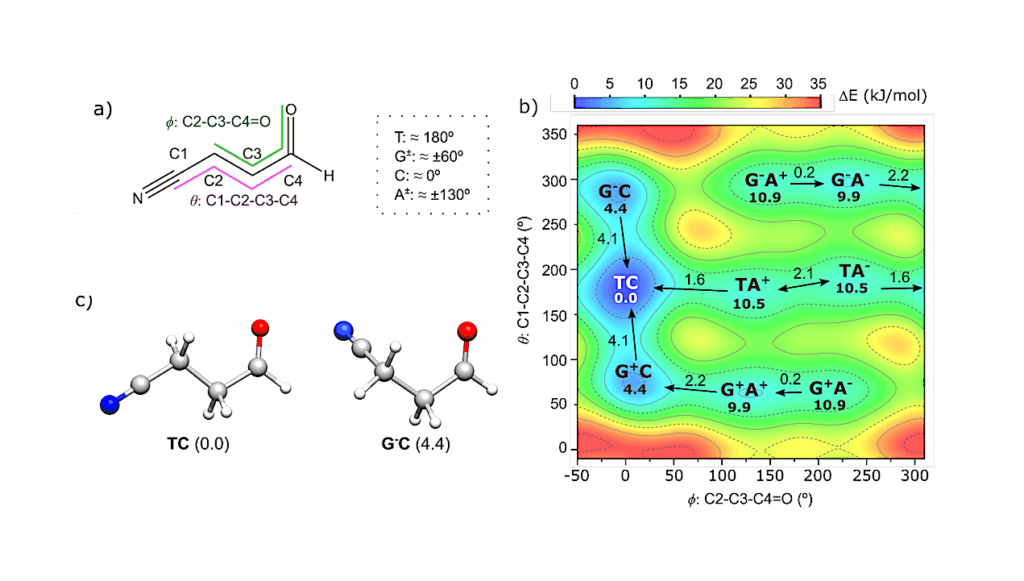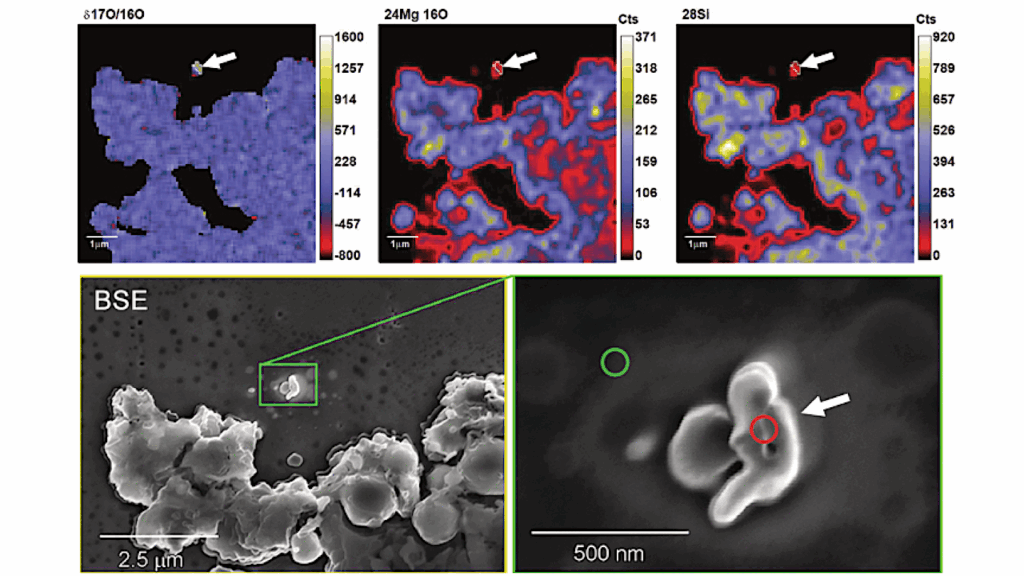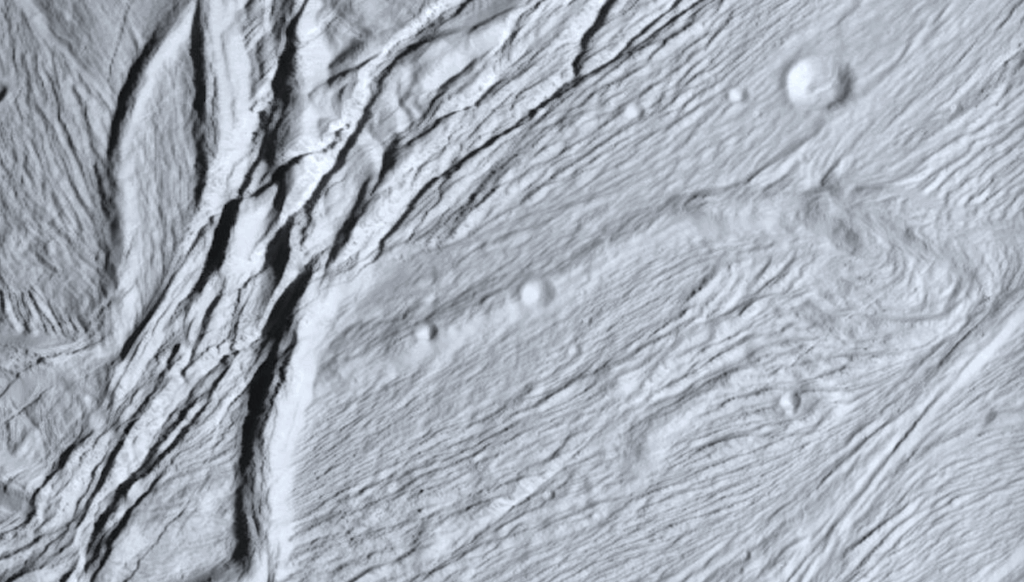Two Asteroids Discovered To Have Complex Organic Matter

Two asteroids (203 Pompeja and 269 Justitia) have been discovered with a redder spectrum (※1) than any other object in the asteroid belt between Mars and Jupiter.
The discovery was led by HASEGAWA Sunao, Associate Senior Researcher at ISAS JAXA, with an international team of researchers from MIT, the University of Hawai’i, Seoul National University, Kyoto University and the Laboratoire d’Astrophysique de Marseille
These two asteroids have a steeper spectral slope than the D-type asteroids (※2), which were thought to be the reddest objects in the asteroid belt. Rather, their spectra resembles that of trans-Neptunian objects and Centaurs in the outer Solar System that have a very red spectrum (※3).
Spectroscopic observations suggest the presence of complex organic matter on the surface of these asteroids. It is possible that these objects were formed near the outer edge of the Solar System and migrated to the asteroid belt during the early stages of the Solar System’s formation. This discovery therefore provides new evidence that planetesimals formed at the outer edge of the Solar System have moved to the asteroid belt within Jupiter’s orbit.
The results of this research were published in the Astrophysical Journal Letters, an academic journal of the American Astronomical Society (AAS), on July 26, 2021.
Background
The internal structure of a large planet such as the Earth is differentiated into the core, mantle and crust. However, such differentiated bodies that lost most of the information about their formation prior to differentiation that occurred during the early stages of Solar System formation. For information about that era, we need to examine undifferentiated (primitive) objects. Some meteorites that have landed on the Earth are thought to have been ejected from primitive minor bodies such as asteroids. Ordinary chondrite meteorites and carbonaceous chondrite meteorites are typical examples. Ordinary chondrites are thought to have been derived from celestial bodies that were formed in the inner region of the Solar System, within the water ice snow line (※4), while carbonaceous chondrites are thought to have been formed in the outer region past the water ice snow line.
It is known that such primitive objects occupy most of the asteroid belt (between 2.1 to 3.3 astronomical units, au (※5)) that sits in the Solar System between Mars (at 1.5 au) and Jupiter (5.2 au). Asteroids that correspond to the ordinary chondrite meteorites on Earth are called S-type asteroids (※2), and a sample from a member of this S-type class, asteroid 25143 Itokawa, was returned to Earth by the Hayabusa (MUSES-C). The asteroids thought to correspond to carbonaceous chondrites meteorites are known as C-type asteroids (※2) and the sample from asteroid 162173 Ryugu returned by the Hayabusa2 spacecraft is an example of this asteroid class.
The distribution of S/C type asteroids within the asteroid belt have a large proportion of S-type asteroids in the inner part of the asteroid belt, while the proportion of C-type asteroid increases towards the outer edge. This arrangement is expected, but it is not a “sharp” distribution, but rather “blurred”. The observation of this distribution is considered to be evidence that asteroids have moved in a radial direction through the Solar System and mixed during the formation of the asteroid belt we see today.
Further out into the Solar System are the D-type asteroids (※2). Just outside the asteroid belt are a group of small bodies known as the Cybeles (3.3 to 3.7 au), which predominantly consist of D-type asteroids. D-type asteroids also form half the population of objects in the more distant Hilda group (3.7 – 4.2 au) and that of the Jupiter Trojans (around 5.2 au). The Tagish Lake meteorite is considered a D-type-related meteorite and its analysis suggests it is the most primitive of the carbonaceous chondrites. D-type asteroids are also known to have a spectra similar to that of comets, which are known to contain a lot of volatile components such as water and carbon dioxide. Judging from the Tagish meteorite analysis and comet observation results, it is thought that D-type asteroids were formed beyond the carbon dioxide snow line, where carbon dioxide formed solid particles (as well as water ice).
Looking towards the outer edge of the Solar System around Neptune, there are many trans-Neptunian and Centaur objects that resemble the asteroids of the asteroid belt. Some of these objects have come within the vicinity of the Earth as comets, but the question has remained as to whether there are any objects in the asteroid belt that have migrated from further away where the D-type asteroids were formed during the early stages of the formation of the Solar System.
Research results
In the asteroid belt, asteroids with sizes over ~100 km in diameter are generally considered to have avoided catastrophic destruction and are thought to be the surviving population of the planetesimals that formed early in the formation of the Solar System. Our international research team therefore conducted a spectroscopic survey of asteroids with diameters of ~100 km or more in the asteroid belt to acquire near-infrared spectroscopic data for objects which have no previously obtained observational data in order to uncover the distribution the planetesimals and the composition of such objects during the formation of the asteroid belt.
In the spectroscopic survey, we discovered that 203 Pompeja, with a diameter of 110 km, has a spectrum redder than even that of the D-type asteroids (Figure 1). Furthermore, examination of past observations revealed that 269 Justitia, with a diameter of 55 km and whose very red spectrum had been previously recorded, has a redness similar to that of 203 Pompeja (Fig. 1).

Figure 1: 203 Pompeja and 269 Justitia spectra. Horizontal axis marks wavelength, while the vertical axis shows the reflectance intensity, normalised to that at a wavelength of 0.55 microns. Longer wavelengths have a higher intensity, which is said to be more “red”. If the intensity decreases with lengthening wavelength, the spectra is said to become more “blue”(adapted from Hasegawa et al. 2021).
In the left-hand figure, the typical spectra of currently known Near-Earth asteroids, asteroid belt asteroids and Trojan asteroids which are dark asteroids with an albedo (absolute reflectance) of 0.1 or less is compared with the spectra of 203 Pompeja and 269 Justitia. Asteroid 162173 Ryugu is a C-type asteroid, while Bennu (destination of NASA’s OSIRIS-REx mission) is a B-type. D-type asteroids have the reddest spectra of the asteroids and are abundant in the Trojan population. You can see that 203 Pompeja and 269 Justitia are redder than even the reddest D-type asteroid.
The figure on the right is a comparison of the dark icy moons, Centaurs and outer edge Solar System objects with albedo of 0.1 or less, with 203 Pompeja and 269 Justitia.It can be seen that 203 Pompeja and 269 Justitia have similar spectra to these trans-Neptunian objects.
Asteroids with a very red spectrum, such as 203 Pompeja and 269 Justitia, have not previously been found in the asteroid belt, Cybele, Hilda or Jupiter Trojan groups. But as we look at the outer edge of the Solar System, these distant celestial bodies and Centaurs are known to have similar or even redder spectra. The spectroscopic comparison revealed that 203 Pompeja and 269 Justitia share similar spectral characteristics with the outer Solar System celestial bodies and those of the Centaurs (Fig. 1).
Previous studies have pointed to the surfaces of the trans-Neptunian objects and Centaurs, which have a redder spectra than the D-type asteroids, being covered with complex organic mat
ter. These two objects in the asteroid belt may therefore also be covered with organic matter.
Scientific significance of this research
The surface of trans-Neptunian objects and Centaurs are covered with complex organics, which are thought to be produced from simple organic compounds such as methane and methanol ice.
On the other hand, the analysis of meteorites thought to correspond to the D-type asteroids suggests that D-type asteroids formed further out than the carbon dioxide snow line.
The three snow lines related to this work are the water ice snow line, the carbon dioxide snow line and the organic compound snow line, and are located steadily further from the Sun in this order.
Let’s now look at the evolution of planetesimals from the perspective of the Solar System formation model. In the classical Solar System formation model, the planets did not move from their location during the early stages of formation to the present day. However, more recent models suggest that the movement of planets such as Jupiter in the early Solar System caused the gravitational field to shift and mixing to occur.
Combining the idea of the snow lines with the latest Solar System formation model, the following can be supposed:
D-type asteroids are formed in the inner region of the Solar System, compared to those asteroids that have a very red spectrum. As a result of planetary migration, a number of these D-type asteroids end up in the range between the asteroid belt and the Trojan group.
Asteroids with a very red spectra, which share an origin with outer Solar System bodies and the Centaurs, are formed further out than the D-type asteroids. They are therefore less numerous in the region between the asteroid belt and Trojan group.
The distribution of asteroids within the asteroid belt show that asteroids with a very red spectra are much less common than D-type asteroids (Figure 2). This is consistent with the location of the snow lines combined with the latest Solar System formation model, and is supporting evidence for this model of Solar System formation.

Figure 2: Evolution of the Solar System. Created in reference to Neveu & Vernazza, 2019 and DeMeo & Carry, 2014. (Credit: Astronomical images: NASA, Ryugu image: JAXA).
Asteroid 162173 Ryugu, from which Hayabusa2 returned a sample, is a C-type asteroid and thought to have formed outside the water ice snow line before moving to a position closer to the Earth (Fig. 2).
However, asteroids 203 Pompeja and 269 Justitia that were discovered here are thought to have been formed near the outer edge of the Solar System beyond the distant organic snow line and then moved to the asteroid belt during the early epoch of the Solar System’s formation (Fig. 2).
By exploring these kinds of objects, it is highly possible that information regarding the outer regions of the Solar System beyond the organic compound snow line during the Solar System’s formation can be obtained without having to travel to the outer edge of the Solar System. This is worth considering as candidate destination mission targets in the future.
Glossary
(※1)Spectrum Like a rainbow, a spectrum is the components that form the light at different wavelengths. Spectroscopy is the division of light into the separate wavelengths, like a rainbow, to obtain the spectrum.
Having a red spectrum refers to a spectrum whose reflected light increases as the wavelength increases. In reverse, a blue spectrum is when the reflectance decreases with wavelength.
(※2)C-type, D-type and S-type asteroids Please see: http://lucy.swri.edu/2018/Asteroid-Taxonomy.html
(※3)Trans-Neptunian Objects and Centaurs Trans-Neptunian objects: small celestial bodies that orbit the Sun beyond the orbit of Neptune.
Centaurs: small celestial bodies between Jupiter and Neptune.
(※4)Snow line This is the location where water ice and carbon dioxide, which are usually liquids or gases on Earth, and organic compounds such as methanol and methane, become ice in outer space within the Solar System. On Earth, when the temperature drops on the ground, water changes phase as water vapour → liquid water → water ice, but in outer space, the phase order is water vapour → water ice, due to the low pressure.
The Solar System formed from a protoplanetary disc, in which the temperature decreases as you move away from the Sun. Since the temperature at which the change to solid occurs is lower going from water ice → carbon dioxide → organic compounds, the water ice snow line is closest to the Sun, the carbon dioxide snow line is next, and the snow line furthest from the Sun is the organic compounds snow line.
(※5)Astronomical unit (au) 1 astronomical unit (1 au) is 149.6 million km. This corresponds to the average distance between the Sun and the Earth. In this article, it refers to the distance from the Sun.
Journal paper information
Article title: Discovery of two TNO-like bodies in the asteroid belt
Journal title: Astrophysical Journal Letters
Date of publication: July 26, 2021 (JST)
DOI: 10.3847/2041-8213/ac0f05
Corresponding Author: Sunao Hasegawa Institute of Space and Astronautical Science, Japan Aerospace Exploration Agency
Authors:
Michaël Marsset Department of Earth, Atmospheric and Planetary Sciences, MIT
Francesca E. DeMeo Department of Earth, Atmospheric and Planetary Sciences, MIT
Schelte J. Bus Institute for Astronomy, University of Hawaii
Jooyeon Geem Department of Physics and Astronomy, and SNU Astronomy Research Center, Seoul National University
Masateru Ishiguro Department of Physics and Astronomy, and SNU Astronomy Research Center, Seoul National University
Myungshin Im Department of Physics and Astronomy, and SNU Astronomy Research Center, Seoul National University
Daisuke Kuroda Okayama Observatory, Kyoto University
Pierre Vernazza Aix Marseille Univ, CNRS, LAM, Laboratoire d ‘Astrophysique de Marseille
Astrobiology, astrochemistry








